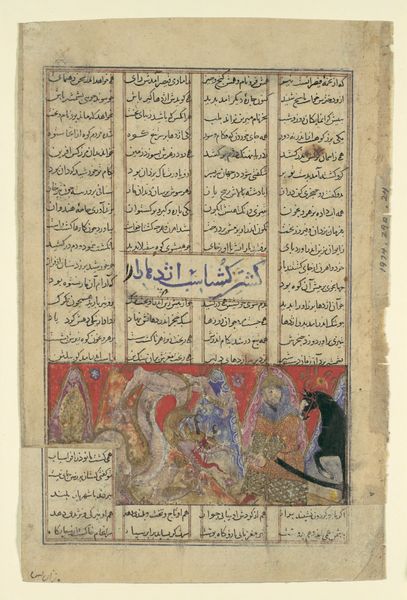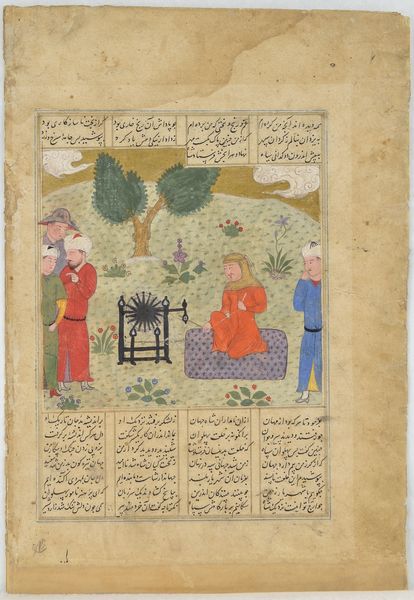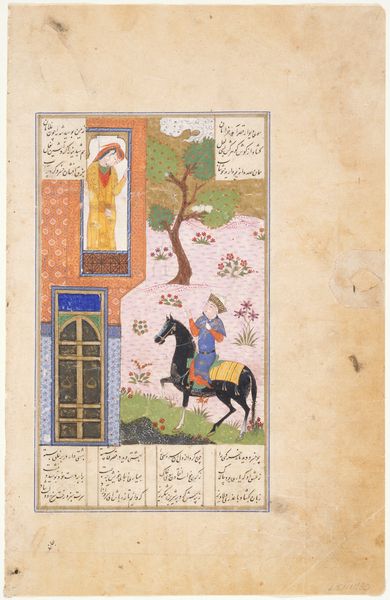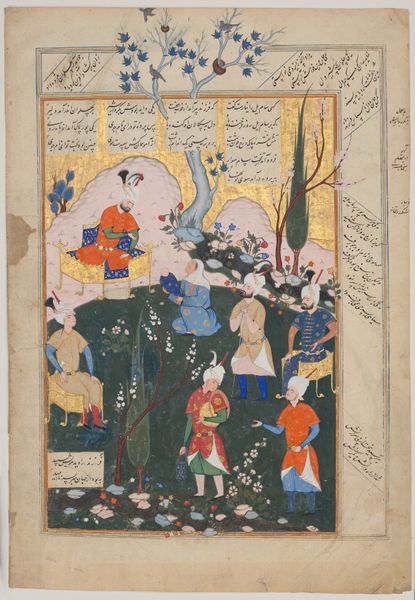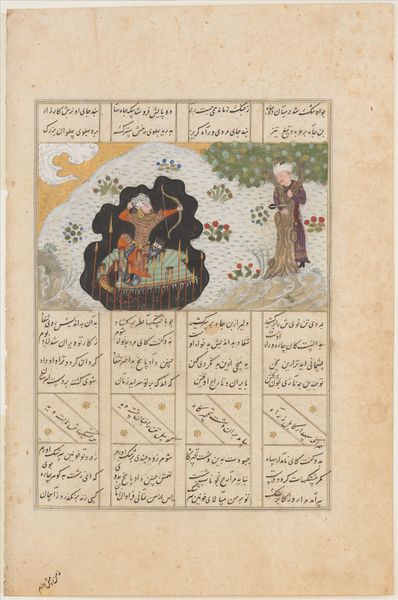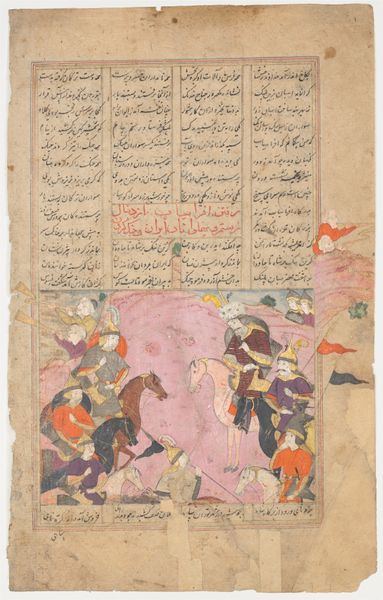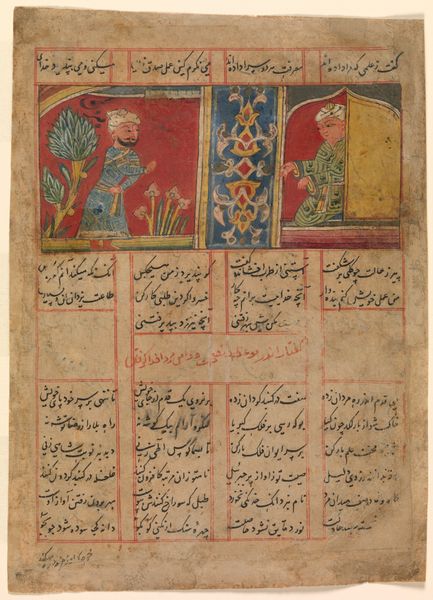
painting, watercolor
#
painting
#
asian-art
#
landscape
#
figuration
#
watercolor
#
miniature
Dimensions: 9 1/2 x 5 3/4 in. (24.13 x 14.61 cm)
Copyright: Public Domain
Curator: Here we have an exquisite miniature painting, tentatively dated to around 1450, titled "Two Youths under a Flowering Tree." The artist, alas, remains unknown. It’s executed primarily in watercolor. Editor: It’s wonderfully dreamlike. The whole scene shimmers—soft blues, those delicate blossoms…It feels melancholic, even, though it depicts what I presume is a romantic encounter. Curator: The beauty belies a complexity in production. Think of the lapis lazuli used for the blues, the ochres for the yellows—these pigments would have been precious, often traded from great distances. And the meticulous layering required, perhaps using brushes with single hairs, to achieve this translucence. This was labor, intense and skilled. Editor: Right, this isn’t just a whimsical rendering of lovers. It's about the societal structure, even the geological forces that brought those colors to this artist’s hand. But going back to the image itself…I find it intriguing how the two figures interact. Or rather, don’t interact. The kneeling youth seems almost oblivious to the standing one. Is it unrequited longing perhaps? Curator: That's what gets me, it evokes longing, definitely longing. See how one youth's draped fabric seems to merge with the tree; are they bound? Do their fates blossom or wither like the flowering tree, that serves as both backdrop and character? Are those figures caught in some dance? What does it say of gender in these devotional objects or books? Editor: The choice of material itself says a lot about power and class. Watercolor on this scale wasn't exactly proletarian art, and someone had to provide the setting for such artistry. Yet this is also where you have art historical questions. Did our youth do the processing themselves? And even so, the availability of watercolors meant its democratization was still occurring? Curator: A good point. And on a visual level the way that the text, and I wish we could read that inscription here, interweaves with the figures gives it an even more profound aura; they, or it is, trapped within a space and its production Editor: I see them as more than trapped; perhaps they revel there; in this place, these materials and what this means to all creation. Curator: A world of devotion! I shall reflect on our points later. Editor: And now our listener might wander onwards into similar devotions.
Comments
No comments
Be the first to comment and join the conversation on the ultimate creative platform.
